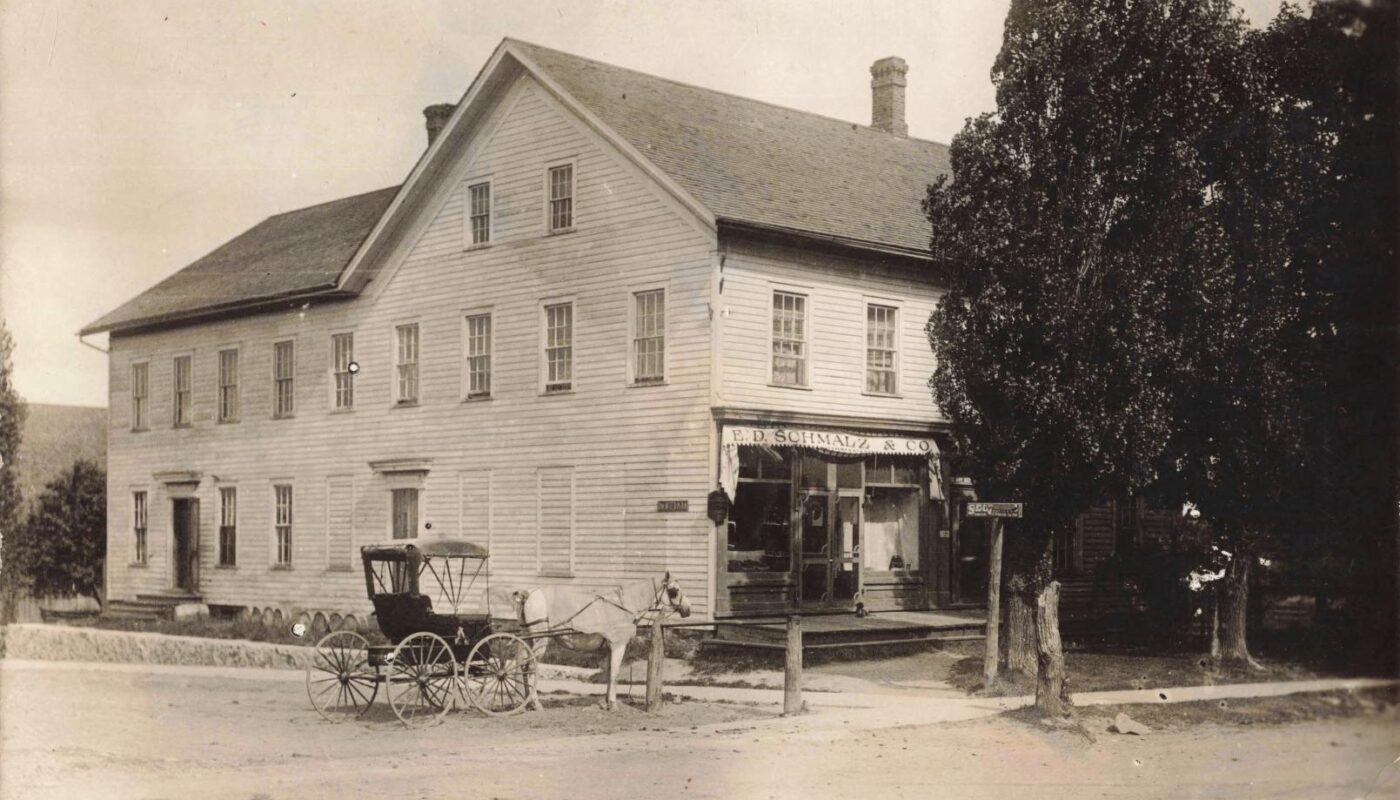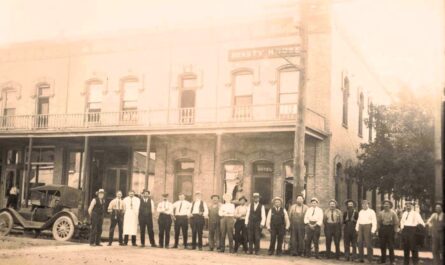In the early 20th century, Port Hope, Michigan, was a modest but thriving community on the Lake Huron shoreline of the Thumb. This circa 1916 photograph shows The Ramsey Co. building, which housed the general store operated by E.D. Schmalz & Co. The large, two-story clapboard structure reflects the multi-purpose commercial buildings common in small towns of the era, often combining retail space on the ground floor with offices or storage above. Such businesses were the lifeblood of rural communities, supplying everything from dry goods and clothing to tools and farm equipment.
Parked in front is a horse-drawn buggy, a reminder that in 1916, automobiles had not yet fully replaced traditional transportation in rural Michigan. The boardwalk-style entrance, large display windows, and prominent awning bearing the store’s name were designed to draw in passing customers and showcase the variety of goods available. The tree-lined street and neighboring wooden structures hint at Port Hope’s slower pace, even as the town adapted to modern conveniences and expanding trade networks.
The Ramsey Co. and E.D. Schmalz & Co. served as more than just retail hubs—they were gathering places where residents caught up on local news, discussed crop prices, and prepared for the coming seasons. Images like this preserve a snapshot of small-town life in Michigan’s Thumb during a period of transition, when traditional rural commerce coexisted with the first waves of 20th-century modernization.




